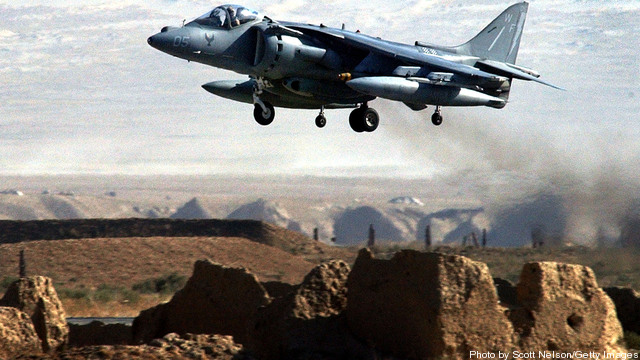Former Top Marine Calls for Joint Work To Get Weapons Quicker
Posted on

I was continually frustrated during my time as the Marine’s Deputy Commandant for Aviation by our inability to rapidly upgrade Marine equipment, especially aircraft cockpits and similar systems. The reason is simple, much of the aerospace and defense industry uses unnecessary and arbitrary proprietary markings as a base requirement. We must change this mind-set.
The time has arrived to develop standardized frameworks and make available common hardware designs and software architectures for future equipment procurements across all four services. We have seen the defense budget more than double since 2001, but now we face a severe contraction as the United States withdraws from Iraq and Afghanistan. However, more of an impact will be the reduction in defense outlays as our national security funds pay a significant portion of the deficit reduction bill.
Even as we reduce spending there will be an increasing requirement to upgrade existing equipment as well as developing future platforms. This is an opportunity to turn a really tough challenge into a win-win strategy. And a great place to begin this revolution in upgrading combat capability is with current and future aircraft.
As the first step, cooperatively and proactively, government and industry should establish common architectures and interfaces to enable this reform initiative and gain great cost and capability benefits. By convening a joint Government / Industry task force, nominee items for standardization and commonality across all Military Services will be identified. Central mission computers, communications equipment, navigation equipment, attitude control systems and human-machine interfaces should be considered.
Notwithstanding “tribal” differences and inherent mission specializations, potential areas for commonality are computer architecture, interfaces, connections, specifications, standard-provider terms and conditions and common functionality. This is not rocket science and the Defense Science Board Task Force on Defense Industrial Structure for Transformation has already recommended adoption of many measures-specifically competitive prototyping, utilization of open architecture to ensure competition for upgrades and licensing of additional suppliers.
As technologies evolve and standards are established, a great deal of free market and entrepreneurial innovation has successfully emerged with such high-technology items as iPod/iPhone applications, GPS-dependent innovations such as navigation-capable automobile and personal digital assistant devices like Blackberry and Treo, Plug-and-Play and USB standards for desktop and laptop computing, and Bluetooth technology and applications.
The thought is not to discourage the innovative market but, rather, to broaden it; there will likely always be the opportunity to develop and protect specific proprietary designs for sensors, units, and applications that connect to core system integration modules and devices as these mature over time. This concept will encourage incremental growth where each innovation builds on the preceding design concept.
We need to be able to rapidly increase combat capability as lessons learned are garnered during operations. The power of open standards is the springboard providing innovation and cooperative development. For example, the standardization and availability of the GPS constellation resulted in the creation of a new industry based on personal navigation.
There are other examples. The Marine Corps was able to respond to a pressing combat requirement to get the AV-8B Harrier a precision targeting capability, the Litening Pod. With a minimum of effort and paperwork, the Litening was integrated into the Harrier systems and immediately put to use. The same process was used to put the Litening on Marine Hornets. Rarely has the combat capability of aircraft been so easily and seamlessly increased.
The combination of open architecture, standardized interfaces and common hardware is compelling. The benefits to government, industry and the taxpayer are clear; it will give us the ability to rapidly and cheaply generate greater combat capability.
The time to implement standardization and commonality reform is now. The combination of warfighter needs and economic necessities sets the stage for Government cooperation with leading industry partners to make this framework a reality.
Retired Lt. Gen. John Castellaw, former Marine deputy commandant for aviation, is president of the brand new Crockett Policy Institute.
Subscribe to our newsletter
Promotions, new products and sales. Directly to your inbox.
